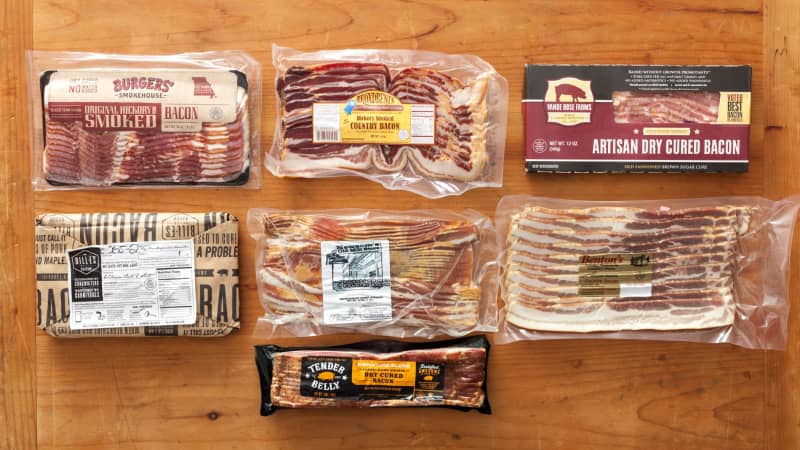Supermarket Bacon
Taste Test
We tasted seven artisanal bacons to find out which one is worth the splurge.
Published Feb. 20, 2019. Appears in America's Test Kitchen TV Season 20: The Most Important Meal

All bacon is special, but some small-batch artisanal bacon is extra-special—and priced accordingly. Since we last tasted artisanal bacons, more bacons made by smaller-scale producers have become available online. We were curious how our previous favorite, Vande Rose Applewood Smoked Artisan Dry Cured Bacon ($29.07 per pound, including shipping), stacked up against the competition, so we tasted it alongside six other high-end dry-cured bacons, all available online and priced from $8.00 to $14.75 per pound (shipping not included). We tried them plain, in our Southern-Style Green Beans, and in BLTs. What did we find out?
We liked all the bacons we tried, but often in different applications. Some were great in green beans but too intense when eaten plain; others were good plain but got lost in a BLT. As it turned out, a lot hinged on just how long—and how extensively—the bacons had been cured and smoked. In general, we liked complex, meaty-tasting bacons with moderate smoke flavor and relatively low sodium. While we can recommend every product, Vande Rose came out on top once again. We've given some information on where each bacon shined brightest in the comments below.
The mission of America’s Test Kitchen Reviews is to find the best equipment and ingredients for the home cook through rigorous, hands-on testing.

Miye is a senior editor for ATK Reviews. She covers booze, blades, and gadgets of questionable value.

This is a members' feature.